Main Types of Photo Damage and What Causes Them
When it comes to preserving precious memories, photo restoration can be a lifesaver. Whether it’s a faded family portrait, a torn wedding photo, or a water-damaged snapshot from a vacation, photo restoration can bring new life to old images and make them look as good as new.
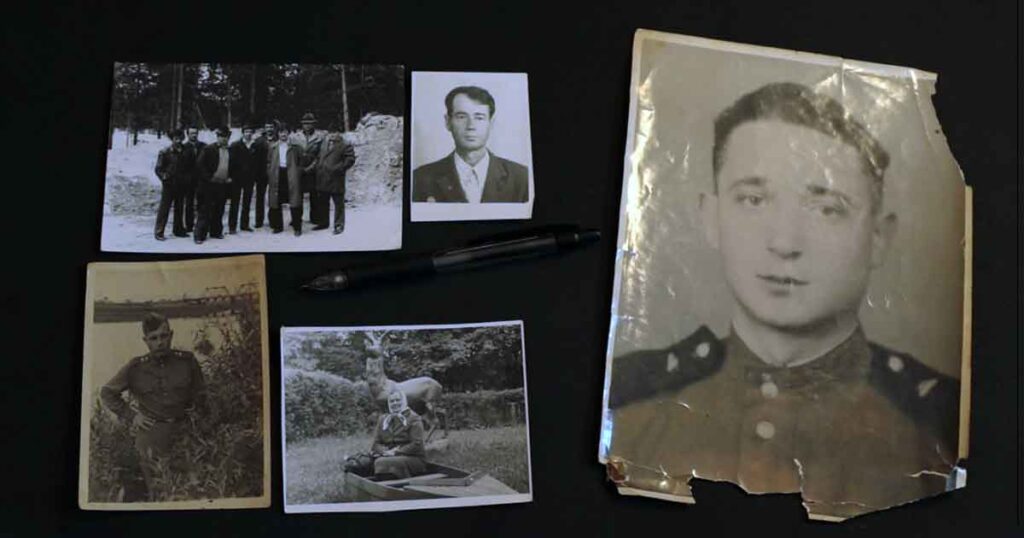
But what types of damage can be restored, and what is the process like? In this article, we’ll explore the different types of damage that can affect photographs and explain what you can expect from the photo restoration process.
Classification of Photo Damage Types
All types of damage are different. We will explain about every particular one in detail in the next sections. For now, let us explain and even worn you about few main causes of a damage:
- Careless handling
- Improper storage
- Age of photos
- Poor quality originals
Points above describe general categories of what damages your lovely photos. If you want to hear some exact examples causes of photo damage:
- Direct contact with water or other liquids
- Direct sunlight (UV-lights)
- Very high temperature (paint melting)
- Contact with rough material (paper, wood, concrete etc.)
These few factors are reasons for 90% of damage that any photo can get. Some of them can be eliminated, by for proper storage of your photos or by scanning (digitalization) of these images.
Types of Photo Damage and How Old Photos Get Damaged
Now that we know some theory behind it, let’s check main types of damage your old photos may get!
1. Fading and Discoloration
One of the most common types of damage that affects old photographs is fading and discoloration. Over time, the colors in a photo can fade or change, making it difficult to see the details or recognize the people and places in the image. This can happen due to exposure to sunlight, heat, humidity or chemical reactions. The color dyes in the film or paper can degrade and lose their intensity, or the dyes can change color due to fading, discoloration or chemical reactions.
Photo restoration experts can use a variety of techniques to restore the original colors and brightness to a faded photo. These techniques include color correction, color grading, and retouching.
Color correction is the process of adjusting the overall color balance of a photo to make it look more natural. Color grading is the process of adjusting the color saturation and contrast of a photo to make it look more dynamic. Retouching is the process of removing specific color problems such as yellowing, red spots, or other discolorations.
Causes of the damage
Fading and discoloration of old photographs is a common problem that can occur due to a variety of reasons.
Exposure to sunlight:
One of the main causes of fading and discoloration is exposure to sunlight. Ultraviolet (UV) rays from the sun can cause the color dyes in the film or paper to degrade and lose their intensity. This can cause the colors in the photo to fade, making it difficult to see the details or recognize the people and places in the image.
Heat and humidity:
Heat and humidity can also cause fading and discoloration. High temperatures and humidity can cause the color dyes in the film or paper to degrade, causing the colors in the photo to fade. Humidity can also cause the paper or film to warp, causing the image to become distorted.
Chemical reactions:
Chemical reactions can also cause fading and discoloration. For example, if the photo is stored in an acidic environment, the acid can react with the color dyes in the film or paper, causing the colors to fade or change color. Exposure to pollutants, such as smoke, can also cause discoloration.
Age:
Age is another factor that can cause fading and discoloration. As photographs age, the color dyes in the film or paper can degrade, causing the colors to fade. This is especially true for photographs that are more than 50 years old.
Improper storage:
Improper storage can also cause fading and discoloration. If photographs are not stored in archival-quality albums or frames, they can be exposed to sunlight, heat, humidity, and other environmental factors that can cause fading and discoloration.
2. Tears and Rips
Another common problem with old photographs is tears and rips. Whether it’s from years of handling, being stored in a damp environment, or being accidentally damaged, tears and rips can make a photo almost impossible to enjoy. Tears and rips can be caused by improper handling, poor storage conditions, or accidents. They can range from small, thin tears to large holes.
Photo restoration experts can use digital tools to repair tears and rips, blending the torn edges together seamlessly and restoring the photo to its original condition. The process involves scanning the photo and using software to clone the areas around the tear or rip and blend them seamlessly with the damaged area. This can be a time-consuming process, but the result is a photo that looks as if it was never damaged.
Causes of the Damage
Tears and rips in old photographs can occur due to a variety of reasons.
Careless handling:
One of the main causes of tears and rips is improper handling. Over time, photographs can become fragile and easily torn or ripped if they are handled too frequently or roughly. This can happen when photographs are passed around among family and friends, or when they are displayed or stored in a way that puts them at risk of damage.
Accidents can also cause tears and rips. For example, a photograph can be torn or ripped if it falls off a wall, if it’s caught in a door, or if it’s damaged by a pet or a child.
Storage conditions:
Storage conditions can also cause tears and rips. For example, if photographs are stored in a damp or humid environment, they can become warped or damaged, making them more susceptible to tears and rips. Similarly, if photographs are stored in a dusty or dirty environment, they can become scratched or scuffed, making them more susceptible to tears and rips.
Aging:
Age is another factor that can cause tears and rips. As photographs age, they can become fragile and more susceptible to damage. This is especially true for photographs that are more than 50 years old.
Poor quality of the original material:
Some photographs, especially those from early years, were printed on poor quality paper or film. This can make them more prone to tears and rips even when handled with care.
3. Stains and Water Damage
Stains and water damage can also be a problem with old photographs. Whether it’s from water damage, mold, or other environmental factors, stains and discoloration can make a photo look unsightly and difficult to view. Stains can be caused by water damage, mold, mildew, or chemical reactions. They can range from small spots to large areas of discoloration.
Water damage can cause curling, warping, and buckling of the paper or film. Photo restoration experts can use a variety of techniques to remove stains and restore the original colors and brightness to a damaged photo.
These techniques include digital cleaning, which involves using software to remove stains, and retouching, which involves removing specific stains and discolorations. In case of water damage, the photo may need to be de-warped, flattened and dried to prevent further damage.
Causes of the Damage
Stains and water damage are common problems that can affect old photographs.
Water Damage:
One of the main causes of water damage is exposure to water, whether it’s from a flood, a leak, or an accident. When photographs get wet, the paper or film can absorb the water and become distorted, curled or buckled. The image can also become blurred or smeared, making it difficult to see the details.
Mold and Mildew:
Mold and mildew can also cause stains and discoloration in photographs. When photographs are exposed to damp or humid conditions, mold and mildew can grow on the surface of the paper or film, causing stains and discoloration.
Chemical reactions:
Chemical reactions can also cause stains and discoloration. For example, if the photograph is stored in an acidic environment, the acid can react with the color dyes in the film or paper, causing stains and discolorations. Exposure to pollutants, such as smoke, can also cause discoloration.
Improper storage:
Improper storage can also cause stains and water damage. For example, if photographs are stored in a damp or humid environment, they can become warped or damaged, making them more susceptible to stains and water damage. Similarly, if photographs are stored in a dusty or dirty environment, they can become scratched or scuffed, making them more susceptible to stains and water damage.
Aging:
Age is another factor that can cause stains and water damage. As photographs age, they can become more susceptible to damage. This is especially true for photographs that are more than 50 years old.
4. Cracks and Creases
Cracks and creases can also be a problem with old photographs. Whether it’s from being stored in a humid environment, being bent or folded, or being accidentally damaged, cracks and creases can make a photo difficult to enjoy.
Cracks and creases can be caused by improper handling, poor storage conditions, or accidents. They can range from small, thin cracks to large creases that can affect the entire image.
Photo restoration experts can use digital tools to repair cracks and creases, blending the cracked edges together seamlessly and restoring the photo to its original condition. The process involves scanning the photo and using software to clone the areas around the crack or crease and blend them seamlessly with the damaged area. This can be a time-consuming process, but the result is a photo that looks as if it was never damaged.
Causes of the Damage
Humidity:
One of the main causes of cracks and creases is exposure to humidity. When photographs are exposed to high humidity levels, the paper or film can absorb the moisture and become distorted, curled or buckled. This can cause the image to become distorted and the paper or film to crack or crease.
Handling:
Handling can also cause cracks and creases. Over time, photographs can become fragile and easily cracked or creased if they are handled too frequently or roughly. This can happen when photographs are passed around among family and friends, or when they are displayed or stored in a way that puts them at risk of damage.
Accidents:
Accidents can also cause cracks and creases. For example, a photograph can be cracked or creased if it falls off a wall, if it’s caught in a door, or if it’s damaged by a pet or a child.
Age:
Age is another factor that can cause cracks and creases. As photographs age, they can become fragile and more susceptible to damage. This is especially true for photographs that are more than 50 years old.
Poor quality of the original material:
Some photographs, especially those from early years, were printed on poor quality paper or film. This can make them more prone to cracks and creases even when handled with care.
5. Scratches and Scuffs
Scratches and scuffs can also be a problem with old photographs. Whether it’s from being stored in a dusty environment, being handled, or being accidentally damaged, scratches and scuffs can make a photo difficult to enjoy. Scratches and scuffs can be caused by improper handling, poor storage conditions, or accidents. They can range from small, thin scratches to deep scuffs that can affect the entire image.
Photo restoration experts can use digital tools to remove scratches and scuffs, restoring the photo to its original condition. The process involves using software to clone the areas around the scratch or scuff and blend them seamlessly with the damaged area. This can be a time-consuming process, but the result is a photo that looks as if it was never damaged.
Causes of the Damage
Scratches and scuffs are common problems that can affect old photographs.
Handling:
One of the main causes of scratches and scuffs is improper handling. Over time, photographs can become fragile and easily scratched or scuffed if they are handled too frequently or roughly. This can happen when photographs are passed around among family and friends, or when they are displayed or stored in a way that puts them at risk of damage.
Storage conditions:
Storage conditions can also cause scratches and scuffs. For example, if photographs are stored in a dusty or dirty environment, they can become scratched or scuffed, making them more susceptible to damage. Similarly, if photographs are stored in a place where they are likely to be bumped or jostled, such as a photo album that is frequently opened and closed, they can become scratched or scuffed.
Accidents:
Accidents can also cause scratches and scuffs. For example, a photograph can be scratched or scuffed if it falls off a wall, if it’s caught in a door, or if it’s damaged by a pet or a child.
Age:
Age is another factor that can cause scratches and scuffs. As photographs age, they can become fragile and more susceptible to damage. This is especially true for photographs that are more than 50 years old.
Poor quality of the original material:
Some photographs, especially those from early years, were printed on poor quality paper or film. This can make them more prone to scratches and scuffs even when handled with care.
6. Digital Photo Damage
Physical images aren’t the only photos that can be damaged; digital photos can also deteriorate.
While editing and exporting images, or scanning images, the image quality may deteriorate or a photo may no longer be in its original state due to technical or human issues. These are common issues, particularly when changing the file format of images.
Fortunately, these minor accidents are easily repaired, albeit at a high technical level.
Causes of the Damage
Import/export issues:
Importing and exporting images appears to be a simple process, but human error or software issues can cause images to lose quality or detail.
If a user or users exports and imports an image several times, these issues will stack at a faster rate, and the image quality will be noticeably lower after a few steps.
Improper scanning or digitizing images with a camera:
While scanning is a common method for digitizing physical images, some opt to use a camera to capture digital versions instead. However, this approach can introduce its own set of challenges if not executed properly.
- Check this article to learn how to scan your images at home, without a scanner, but using your phone.
One issue is related to alignment and perspective distortion. When photographing an image with a camera, especially at an angle, there’s a risk of introducing distortions that weren’t present in the original. This can result in skewed proportions, loss of detail, or uneven focus across the image.
Social media compression:
When uploading photos to social media platforms, they are frequently compressed to reduce file sizes and improve loading times. While this may appear to be beneficial for online sharing, it can significantly reduce image quality, especially sharpness and detail. Compression algorithms can introduce artifacts and loss of fine details, resulting in a significant reduction in image quality when compared to the original.
7. Other types of damage
Other types of damage that can affect old photographs include missing pieces, dust, and dirt, mold, mildew and more. In some cases, the damage may be so severe that the photo is beyond repair.

But in many cases, photo restoration experts can use digital tools to repair the damage and restore the photo to its original condition.
How to Avoid Damaging My Printed Photos?
In order to prevent 95% of the damage that your photos may receive, it is important to know how to store photographs properly, and how to handle them properly.
How to Store Printed Photos
First and the most important part of saving your photos is their storage. We have a full article that describes in details how to store your printed photos and avoid damage, but here are few most important points:
Store your photos in albums or specialized vertical photo boxes
One effective way to protect your printed photos from potential damage is by storing them in albums or specialized vertical photo boxes.
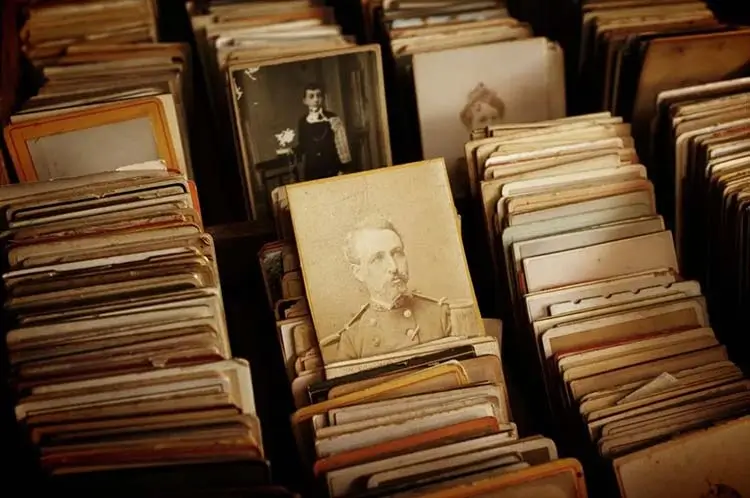
These storage options provide a safe and organized environment for your cherished memories. Albums typically feature acid-free pages and protective sleeves, guarding against fading, discoloration, and yellowing caused by exposure to light, dust, and air pollutants.
Additionally, vertical photo boxes are designed to store photos vertically, preventing bending, creasing, and warping.
Handle your photos with care
Handling your photos with care is crucial to preserving their quality and longevity. There are various types of damage that printed photos can be susceptible to, but with proper precautions, you can avoid them.
One common type of damage is physical mishandling, such as bending, tearing, or scratching the surface of the photo. To prevent this, always hold the photo by its edges and avoid touching the image area.
What to Do if My Photos are Already Damaged?
As you can see, there are many types of damage that can affect old photographs, but with the help of photo restoration experts, most of them can be repaired. Whether it’s fading and discoloration, tears and rips, stains and water damage, cracks and creases, or scratches and scuffs, photo restoration can bring new life to old images and make them look as good as new.
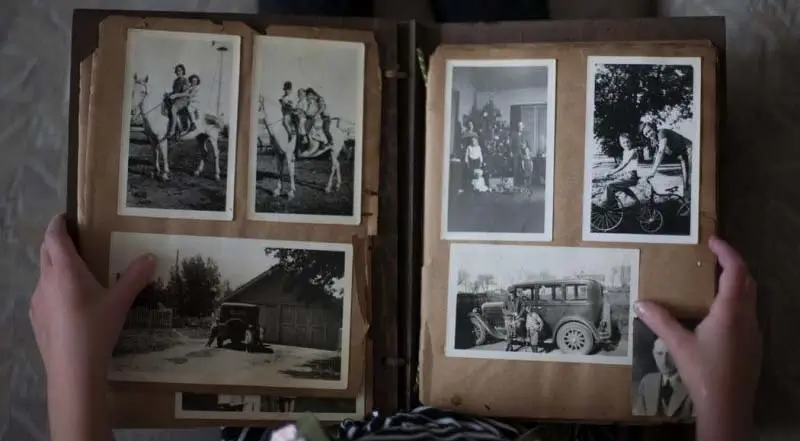
So if you have old photographs that you would like to restore, consider contacting a photo restoration expert to see what they can do for you.
Trust your Photo to Professional Photo Restoration Service
We offer high-quality photo restoration services to help you preserve your precious memories. Our team of experts have years of experience in repairing all types of damage, and we use state-of-the-art digital tools and techniques to restore your photographs to their original condition. We are confident in our ability to bring new life to your old photographs and make them look as good as new. So if you’re ready to preserve your precious memories, contact us today to get a free and personalized quote on your photos.
Cracks and creases can be caused by improper handling, poor storage conditions,
Get a Free Quote
✔ Professional Photo Restoration
✔ Fast Delivery (1-4 Business days)
✔ Low Price Without Taxes or Fees
✔ Unlimited Free Revisions
✔ Satisfaction Guarantee
LEARN MORESubscribe to Newsletter
















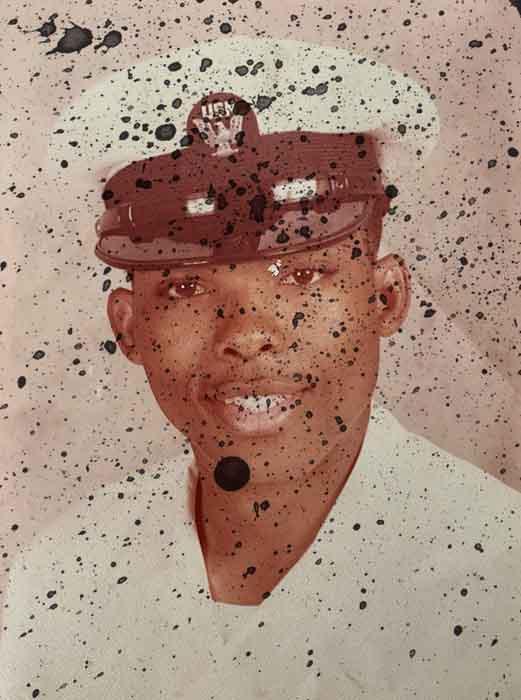


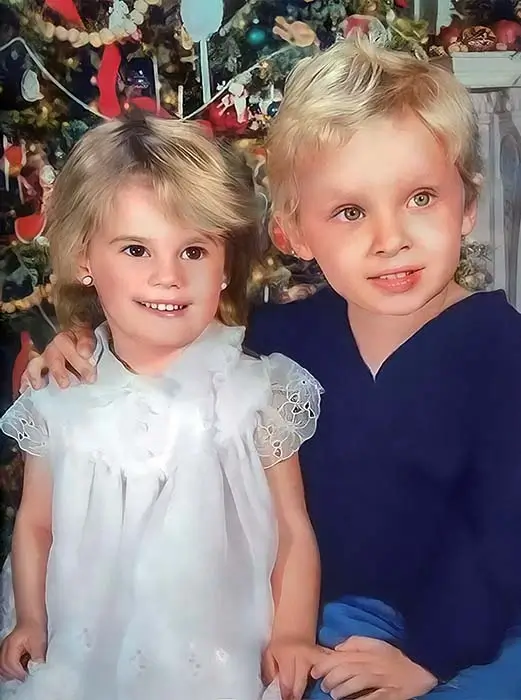





Photo Editing vs Restoration: What’s The Difference?
You have heard about both photo editing and photo restoration [...]
Dec
Walgreens Photo Restoration Services: Is There Anything Better?
Walgreens is a well-known pharmacy chain that offers old photo restoration services. [...]
Apr
Can AI Really Restore Old Photos? 2025
Can AI really restore your photos at home, without any [...]
Dec
Blurry and Out-of-Focus Images: A Guide to Photo Restoration
Have you ever taken a photo that you were really [...]
Jan
How to Digitize Photos With Phone at Home? Easy Guide!
Do you have photos and want to make them into [...]
Dec
Cracks in Old Photos: How to Save Your Precious Pictures?
Discover expert tips and solutions to restore old photos damaged [...]
Jul
How To Colorize Black & White Photos: Photoshop Tutorial 2025
Detailed tutorial to teach you how to colorize your black [...]
Jun
What is Photo Restoration and How Does it Work? 2025
Want to know what photo restoration is and how does [...]
Dec
How to Pick the Best Online Photo Restoration Service?
Are you looking to restore old and damaged photos? We [...]
Jan
FAQ – Photo Restoration and Colorization Services
Do you have any questions about your old photographs? This [...]
Aug
How To Store Old Printed Photos and Avoid Damage
Do you have some precious printed photos? Let us explain [...]
Jan
The History of Photo Restoration 2025
Discover the rich history of photo restoration, a practice dating [...]
Dec